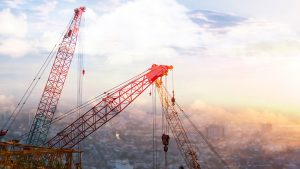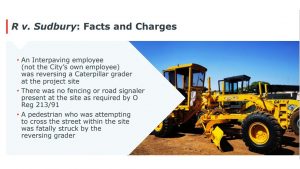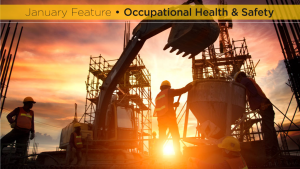Panic. Fear. Misinformation.
These are the issues experienced on a construction site when a worker tests positive for COVID-19, explained health and safety professionals during a panel discussion entitled Confirmed Case – Be Prepared to Act Quickly and Effectively.
The panel, where construction firms shared stories of actual case studies onsite and lessons learned, was part of a Preparing Your Workforce During the Second Wave webinar, hosted by the Residential Construction Council of Ontario and the League of Champions.
The dreaded phone call
Darrin Husack, health and safety manager with ConDrain Group, recalls the day he got the “dreaded phone call” from a foreman that one of the workers onsite had tested positive for COVID-19.
“There is the panic that sets in across the board,” explained Husack. “It spreads pretty quick, so there was a lot of issues trying to maintain privacy. We had to make sure it stayed quiet about who it is and then there was the spreading of information and misinformation and what had happened. We got into close contacts versus possible interactions very quickly and got a hold of the government, the public health unit and the Ministry of Labour.”
ConDrain shut down the site and started conducting interviews with the positive test case and co-workers to see exactly who was considered a close contact.
“We were trying to figure out whether or not it happened at the site, whether it started outside. It became pretty clear that nobody else on the site had been around anything that would have posed an issue,” said Husack. “Nobody had travelled, nobody had a temperature, so we were able to go through and find out not only who was affected as a close contact but where it might have come in.”
He found the worker knowingly came into work even though they was symptomatic.
“You are not in this by yourself”
One of the most challenging things was to communicate information quickly.
“We wanted to drive home that message of you are not in this by yourself, you’re not just protecting yourself, you’re protecting everybody,” he said. “I think that’s one of the things that is a little different with COVID. We as health and safety professionals are always looking out for everybody else. It’s not that ‘me first’ attitude.
“With COVID there is that ‘me first’ but you are really asking workers to be those safety professionals and stop the spread to everybody else at the same time.”
Craig Sparks, national health and safety manager for Maple Reinders, spoke about two different cases, one on a site in Alberta and the other in Ontario.
“Comparing the two, our first case in Alberta we had 45 workers sent home, everyone onsite was sent home,” he said. “We had 14 days of lost production and site wide sanitation. You can imagine the cost factor there and the work that had to be done. We had issues with the client and obviously there were lessons learned.
“Our confirmed case, in Ontario four workers were sent home instead of 45,” he explained. “We had zero days of lost production, minimal sanitation required…and informed the client of the event and gave confirmation that the situation is under control. Even though this situation was handled much better we still had lessons learned.”
The company’s pandemic committee developed a confirmed COVID-19 case response flowchart which the company follows when there’s a positive case on one of their sites.
“We want to make sure that this tool can be used by anyone if anyone is interested in it,” Sparks said.
Emphasizing the importance of contact tracing
Daniel dos Santos, health and safety manager at Tridel, said the first thing they did when someone had symptoms onsite was contact tracing.
“As soon as we heard someone had symptoms and had to leave the project we made sure we knew exactly where the worker was in the last few days so that way it would be easier for us to make sure deep sanitation was done,” he said. “We phoned the contractors onsite by phone call immediately and arranged a third-party organization to clean high traffic areas.”
The joint health and safety committee and worker trades committee were also informed right away.
“We believe that we can’t win this battle by ourselves we have to work together,” said dos Santos. “We want to have everyone sharing their perspective from the workers to the senior management of our company.”
They focused on education throughout the organization including site orientation and safety talks so everyone was aware of policies and processes in place.
Follow the author on Twitter @DCN_Angela.










Recent Comments
comments for this post are closed